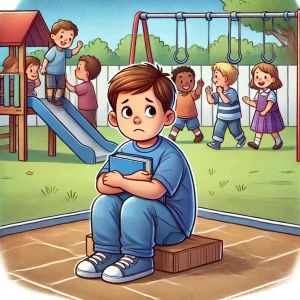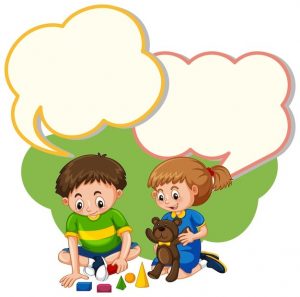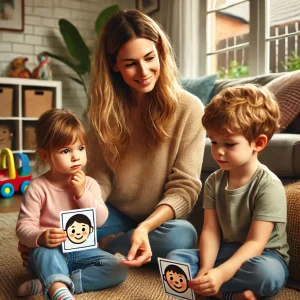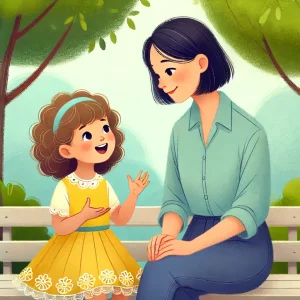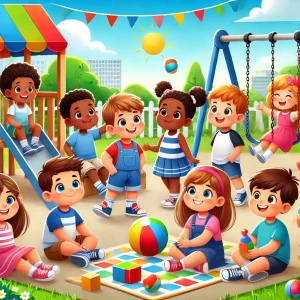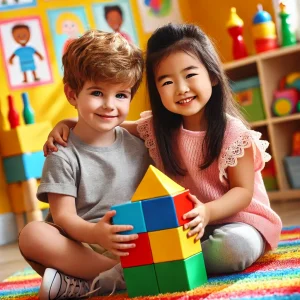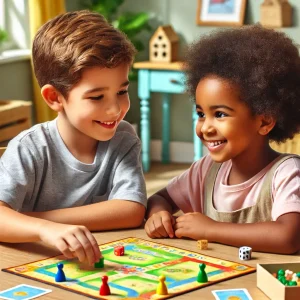Are Social Stories Part of Applied Behavior Analysis (ABA)
Last Updated: January 16, 2025
Have you ever wondered how social stories help children with autism understand social cues? These tailored narratives are essential for explaining social norms and behaviors in a way that’s easily understandable. Meanwhile, Applied Behavior Analysis (ABA) focuses on teaching skills through structured reinforcement. While not a standard ABA technique, social stories are often integrated into ABA programs to enhance learning by adding context to behavioral lessons. This blend helps make abstract social concepts more concrete, proving valuable in comprehensive autism therapy.
Understanding the Role of Social Stories in Autism Therapy
Social stories are powerful tools in autism therapy, designed to help children grasp social cues and appropriate behaviors through simple, relatable narratives. These stories break down social interactions into clear, manageable parts, making it easier for children with autism to understand and apply social rules in real life.
Incorporating social stories into Applied Behavior Analysis (ABA) programs enhances their effectiveness. While ABA teaches behavioral skills through structured reinforcement, social stories add context, helping children not only learn what behaviors are expected but why they matter in social settings. This approach has proven to boost both comprehension and practical social skills.
Also Read: Supporting Children with Autism by Online Behavioral Therapy
Benefits of Social Stories in Behavioral Interventions
Social stories are a key tool in helping individuals with autism understand and engage with the world around them. Here are some specific benefits they offer:
- Developing Empathy: Social stories help children with autism see and understand the perspectives and emotions of others. This aids in building empathy and can lead to better social interactions.
- Guiding Behavior: By explaining social norms clearly, social stories teach appropriate behaviors for various settings, like how to behave in a classroom or at a party. This guidance helps individuals adapt to new environments and situations more easily.
Real-Life Success:
- Example 1: A young boy learned to handle school transitions smoothly through social stories, reducing his anxiety and improving his ability to move between activities.
- Example 2: A girl who was overwhelmed by social gatherings began to enjoy family events more after social stories helped her understand what to expect and how to manage her feelings.
Integrating Social Stories with ABA Techniques
Integrating social stories with Applied Behavior Analysis (ABA) is a powerful way to enhance social skills training for individuals with autism. Here’s how these tools work together in therapy sessions and some examples of their success.
- Practical Integration: ABA therapists use social stories to set the stage for teaching specific behaviors. For example, a social story about greeting people can precede a role-playing exercise in an ABA session. This helps the individual visualize and understand the behavior before practicing it.
- Reinforcing Behaviors: Social stories reinforce the lessons of ABA by consistently explaining why certain behaviors are important. After an ABA session on sharing, a therapist might read a social story about sharing toys to reinforce the concept as a normal part of social interaction.
Success Stories:
- Case Study 1: A child learned to make eye contact more consistently after being introduced to a social story that explained its importance, coupled with ABA practice and positive reinforcement.
- Case Study 2: A social story about the benefits of waiting patiently helped a young girl manage her anxiety and behavior during group activities, enhancing her ability to participate calmly.
How to Create Effective Social Stories for ABA Programs
Creating effective social stories for ABA programs involves careful planning and customization to meet the unique needs of each individual. Here’s a straightforward guide to help you craft stories that can make a real difference in behavioral therapy.
Step-by-Step Guide to Crafting Social Stories:
- Identify the Purpose: Start by determining the specific behavior or social skill you want to address. This could be anything from sharing toys to understanding feelings.
- Gather Information: Collect details about the individual’s experiences, preferences, and challenges related to the behavior. This information will help make the story relevant and engaging.
- Write a Simple, Clear Script: Use simple language to describe the situation. Include what will happen and why it is important. Make sure the story reflects the individual’s perspective and is easy to understand.
- Incorporate Visuals: Add pictures or drawings to illustrate key points of the story. Visuals can help explain the context and actions more clearly.
- Review and Revise: Before using the story in a session, review it with colleagues or caregivers to ensure it’s appropriate and effective. Make any necessary adjustments based on their feedback.
Steps to Create a Social Story
| Step | Description | Example/Tip |
|---|---|---|
| Choose the Behavior or Skill | Identify a specific social behavior or skill to focus on. | E.g., Sharing toys, taking turns, waiting in line. |
| Write a Clear and Simple Script | Use short sentences and focus on positive actions. | “When it’s time to share, I can give my friend a toy to play with.” |
| Add Visuals or Pictures | Include photos, drawings, or symbols to support the text. | A picture of two kids sharing toys. |
| Personalize the Story | Use the child’s name and relate it to their preferences. | “Sam loves cars. Sam will share his red car with his friend.” |
| Review and Revise | Ensure the story is age-appropriate, clear, and engaging. | Share with a therapist or caregiver for feedback. |
Tips for Tailoring Social Stories:
- Personalize the Content: Customize the story to include the individual’s name and personalize the scenarios based on their interests and experiences.
- Keep It Positive: Focus on positive behavior and outcomes. Highlight the benefits of following the social cues or rules described in the story.
- Use Consistent Format: Maintain a consistent format for all your social stories. This helps create a predictable structure that makes it easier for the individual to follow and learn from each story.
Conclusion
Social stories are a fantastic tool in autism therapy, helping individuals grasp and manage social interactions effectively. When combined with Applied Behavior Analysis (ABA), they provide a robust approach to teaching social norms and behaviors. These stories not only improve understanding but also enhance confidence and social skills. We encourage exploring social stories as a key part of autism therapy. At Wellness Hub, we specialize in integrating these methods to support development and success.
Frequently Asked Questions:
1. What are social stories in ABA therapy?
Social stories in ABA therapy are short stories used to teach children with autism about social norms and expected behaviors in different settings.
2. How do social stories help children with autism?
They help by clearly explaining social situations and appropriate responses, making social interactions easier to understand and manage.
3. Can social stories improve my child’s social skills?
Yes, social stories can significantly improve social skills by providing examples of proper behavior in social scenarios.
4. What age is appropriate for using social stories in autism therapy?
Social stories can be tailored for any age, making them suitable from toddlers to older children, depending on their developmental needs.
5. How often should a child be exposed to social stories for effective learning?
Regular exposure, such as daily or several times a week, is effective in reinforcing the behaviors and norms described in the stories.
6. Are there specific ABA techniques that work best with social stories?
Techniques like role-playing and positive reinforcement pair well with social stories to enhance learning and behavior modification.
7. Can parents create social stories, or should they be professionally made?
Parents can create social stories with some guidance, but professional input ensures they are developmentally appropriate and effective.
8. What should be included in a social story for it to be effective?
A good social story should include clear, concise descriptions of situations, what to expect, and why certain behaviors are necessary.
9. How can I access resources for creating social stories?
Visit our resources page for guides and templates on crafting effective social stories.
10. Can social stories be used outside of therapy sessions?
Absolutely! Social stories are great for home use, helping children practice and apply social skills in everyday life.
About the Author:
Shravanaveena Gajula
M.Sc ., Speech and Language Pathology (5+ years of experience)
Shravanaveena Gajula is a dedicated Audiologist and Speech-Language Pathologist with a BASLP and an M.Sc in Speech and Language Pathology. With experience spanning multiple settings, including Wellness Hub and Ashray Akruti, Veena specializes in a wide range of disorders from developmental issues in children to speech and language assessments in adults. Her expertise includes parent counseling, managing speech sound and fluency disorders, and creating individualized therapy programs. Veena is also PROMPT certified and an author of several insightful blogs on speech and language pathology, aiming to educate and assist caregivers in supporting their loved ones.
Book your Free Consultation Today
Parent/Caregiver Info:
Client’s Details:
* Error Message
